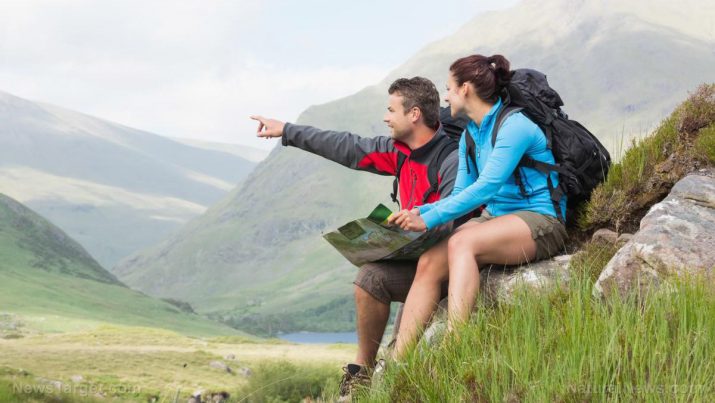Can YOU navigate without your phone? How to find a sense of direction without GPS
Friday, July 20, 2018 by Frances Bloomfield
http://www.bugout.news/2018-07-20-can-you-navigate-without-your-phone-how-to-find-a-sense-of-direction-without-gps.html

For many folks, having a GPS-capable device or system is a must. How else would they be able to get around otherwise? But there may come a time when a GPS is out of reach, leaving one nothing else to rely on but their wits. What do you then? Curl up and leave yourself to the elements, or make use of your natural sense of direction? Of course you’ll choose the latter, unless you’re also one of those folks who don’t have a sense of direction. Luckily, it’s not too late to learn it.
Follow these tips to make navigating without a GPS a little less stressful and a lot more fun. (h/t to GearPatrol.com)
- Turn to the sun: Most everyone knows that the sun rises in the east and sets in the west — at least in the Northern Hemisphere. This means that you’ll at least be able to discern where east and west are depending on the time of day (e.g. the morning sun being closer to the horizon is where east is). However, this will also give you a rough idea of where south and north are too, particularly if you take note of where your shadow is facing. According to GearPatrol.com, your shadow will be pointing in the direction opposite to the sun’s position, so it’ll be east in the evening and west in the morning. Another handy trick is to look for moss on trees. Moss thrive in shade, so they tend to grow on the side of trees facing north, in the Northern Hemisphere at least.
- Look to the stars: Although the North Star is a misnomer (it’s actually 0.7 degrees off from true north), it’s still an invaluable tool for nighttime navigation. To find the North Star, you should always keep the constellations Big Dipper, Little Dipper, and Cassiopeia in mind. The Big Dipper is composed of six stars, four of which form the ladle. Once you identify the ladle, imagine that soup is being poured from it. This will lead you to the direction of the North Star. This star is the tip of the Little Dipper’s handle, and is easier to spot since it’s brighter than the other stars making up the Little Dipper. If you instead find a constellation forming a weird “W,” then you’ve found Cassiopeia and have gone too far. The North Star is between Cassiopeia and the Big Dipper.
- Learn to read a map: As per ModernSurvivalBlog.com, you should acquaint yourself with road maps and topographical maps. Road maps will present you with the basic layout of an area and help you familiarize yourself with the locations of any hills, mountains, and valleys. Topographical maps will give you all of these and more, in finer detail. Knowing what the colors and lines mean will be immensely helpful since they all stand for something specific. For instance, green means trees, while white means the absence of trees (but not grass or shrubbery). Dark-brown lines, meanwhile, mean a steep area with lots of cliffs. Once you’ve gotten down the essentials of map reading, then you’ll have a better idea of the area’s geography. (Related: 32 basic survival skills to teach your kids ASAP)
- Know the lay of the land: Having a lowdown of the land will always be advantageous. Being familiar with any distinctive landmarks, trails, or rivers could mean the difference between finding your way to civilization and roughing it out in strange territory. So if you’re new to an area, take the time to know it and gain a better understanding of the landscape. Preparedness is key.
As with anything, practice makes perfect. Don’t bum yourself out if you can’t find north at night or if you can’t tell up from down on a road map on your first try. Just keep at it and soon enough you’ll find yourself with a sense of direction that may just get you out of a tight spot.
If you’d like to learn other essential skills that could save you one day, simply go to Preparedness.news.
Sources include:
Tagged Under: Tags: bug out, celestial navigation, directions, GPS, how to, navigation, off grid, preparedness, prepper, prepping, survival essentials, survival skills, survivalist

